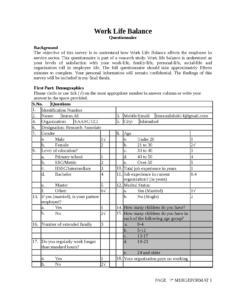Utilizing such a structured approach streamlines the request process, reducing ambiguity and potential misunderstandings. It helps employees articulate their needs effectively and enables employers to evaluate requests efficiently. This can lead to increased employee satisfaction, improved work-life balance, and potentially higher retention rates. A clear process also ensures compliance with relevant legislation and company policies.
This article will explore the key components of effective structures for these requests, offering practical examples and guidance for both employees seeking flexibility and employers implementing such arrangements. Further discussion will cover legal considerations and best practices for managing flexible work programs successfully.
Key Components of a Flexible Work Request
Well-structured requests for flexible work arrangements generally include several key components to ensure clarity and facilitate effective evaluation.
1. Contact Information: Including the employee’s name, department, job title, and contact details ensures clear identification and facilitates communication.
2. Current Work Schedule: Outlining the current working pattern provides context and a baseline for comparison with the proposed flexible arrangement.
3. Proposed Flexible Work Arrangement: This section details the specific changes requested, such as adjusted hours, compressed workweeks, or remote work options. Clear and specific descriptions of the desired schedule are essential.
4. Rationale/Justification: Explaining the reasons behind the request, such as childcare responsibilities, further education, or health considerations, strengthens the request and demonstrates a considered approach.
5. Proposed Start Date and Duration: Specifying the desired start date and whether the arrangement is intended to be temporary or permanent clarifies the scope of the request.
6. Impact on Work and Team: Addressing potential impacts on workload, team collaboration, and client service demonstrates proactive consideration of business needs and potential solutions. Suggesting mitigation strategies helps address potential concerns.
7. Suggested Communication and Collaboration Strategies: Proposing strategies for maintaining effective communication and collaboration while working flexibly, such as regular check-ins or utilizing specific communication tools, further strengthens the request by demonstrating a commitment to productivity and teamwork.
These components enable informed decision-making regarding flexible work arrangements, balancing individual needs with organizational requirements. A well-crafted request increases the likelihood of a successful outcome and contributes to a positive and productive work environment.
How to Create a Flexible Work Request
Creating a well-structured flexible work request increases the likelihood of a positive outcome. A clear and comprehensive request demonstrates professionalism and consideration for both individual needs and organizational requirements. The following steps outline how to develop an effective request.
1: Gather Necessary Information: Collect relevant personal details (name, department, job title, contact information), current work schedule details, and specific information about the desired flexible working arrangement (e.g., proposed schedule, start date, duration).
2: State the Desired Flexible Work Arrangement Clearly: Specifically articulate the requested changes to the current work schedule. This might include adjusted start and end times, compressed workweeks, remote work days, or a combination of options. Clarity and precision are crucial.
3: Provide a Compelling Rationale: Explain the reasons for the request, providing context and justification. This could include childcare obligations, educational pursuits, health considerations, or other relevant personal circumstances.
4: Address Potential Impacts and Mitigation Strategies: Consider the potential effects of the requested changes on workload, team collaboration, and client service. Proactively suggest mitigation strategies to address potential concerns and demonstrate a commitment to maintaining productivity.
5: Propose Communication and Collaboration Strategies: Outline how effective communication and collaboration will be maintained while working flexibly. This could include regular check-ins, utilizing specific communication platforms, and clear protocols for availability and response times.
6: Review and Revise: Carefully review the completed request to ensure clarity, completeness, and professionalism. Ensure all necessary information is included and that the rationale is well-articulated. Consider seeking feedback from a trusted colleague before submission.
7: Submit the Request Through Appropriate Channels: Submit the completed request through the designated channels, whether it be a formal online system, email to a manager, or a printed form. Adhere to any established company procedures for submitting such requests.
A thorough and well-structured request demonstrates a proactive and professional approach, increasing the likelihood of a favorable outcome. Addressing potential concerns and proposing solutions contributes to a smooth transition to a flexible work arrangement that benefits both the individual and the organization.
Standardized forms for flexible work arrangements provide a crucial framework for navigating evolving workplace dynamics. These structures facilitate clear communication, efficient processing, and equitable consideration of employee needs. Understanding the key components, crafting compelling rationales, and proactively addressing potential impacts are essential for successful implementation. Such clarity benefits both employees seeking flexibility and employers striving to create adaptable and supportive work environments.
Embracing structured approaches to flexible work requests fosters a culture of transparency and mutual respect. This proactive adaptation to changing workforce needs positions organizations for increased employee engagement, improved retention rates, and enhanced overall productivity in the evolving landscape of modern work. Effective utilization of these structured requests can contribute significantly to building a more adaptable, inclusive, and ultimately, successful future of work.

